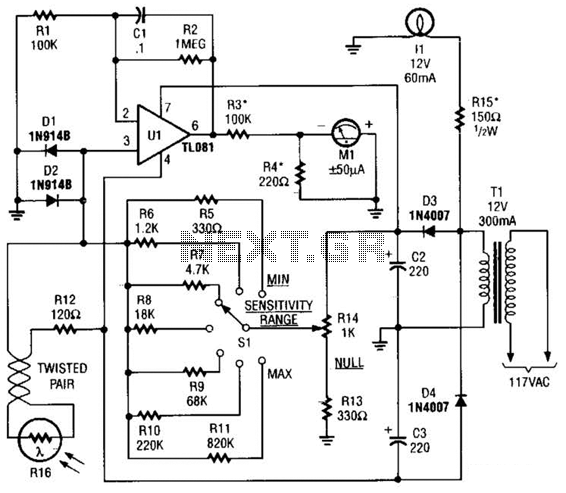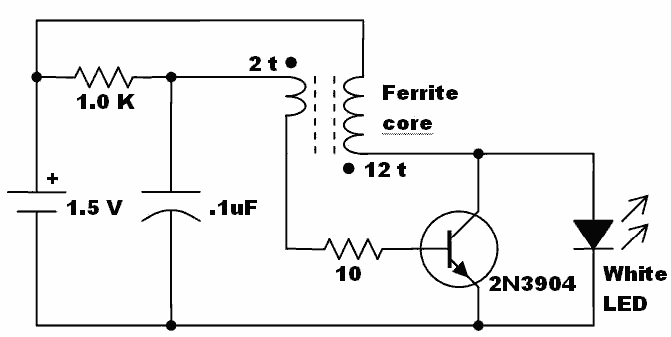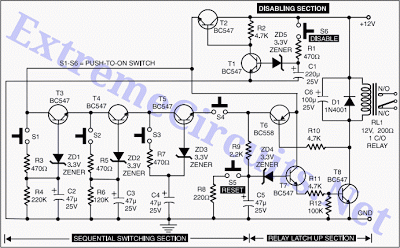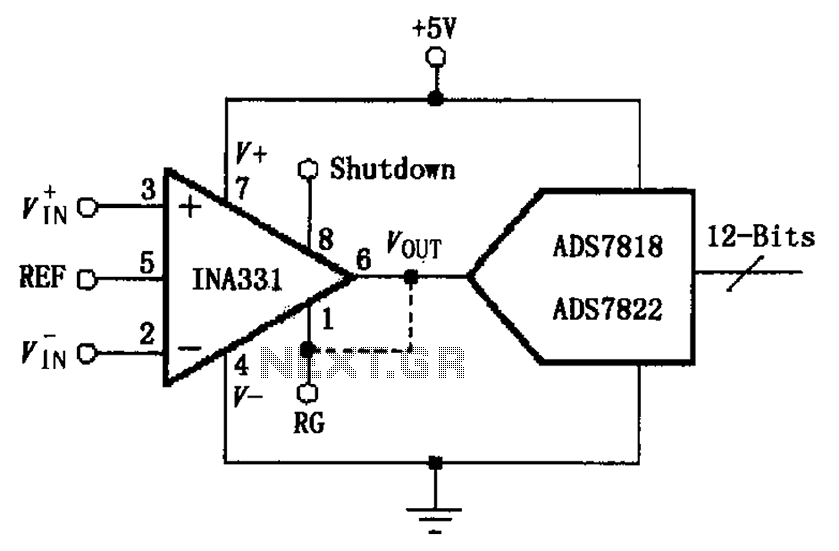
An Enhanced Shed / Garage Alarm circuit
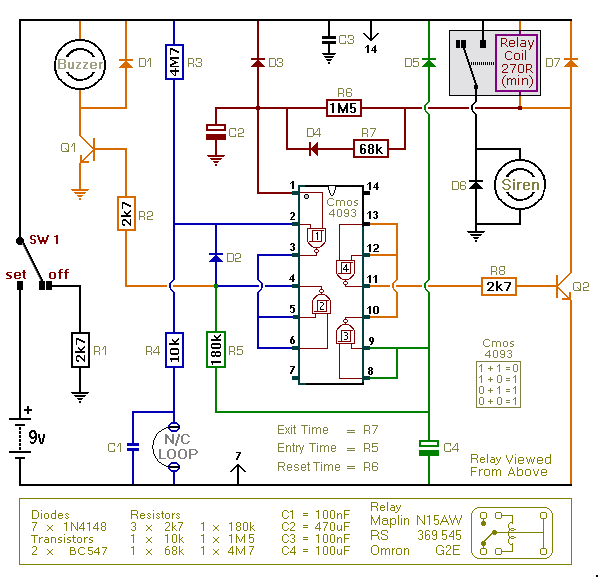
This is an improved version of the basic Garage/Shed Alarm. The Entry and Exit delays have been extended to approximately 30 seconds, and a timed Siren cut-off along with an automatic reset feature has been added. Additionally, the LED has been replaced with an entry buzzer. These enhancements allow for a significantly broader range of applications for the new version.
The enhanced Garage/Shed Alarm circuit operates on a simple yet effective principle, providing security for garages and sheds by detecting unauthorized entry. The core components of this alarm system typically include a microcontroller, a passive infrared (PIR) motion sensor, a buzzer, and a relay module for activating a siren or alarm sound.
The motion sensor detects movement in its vicinity and sends a signal to the microcontroller. The microcontroller processes this input and initiates the alarm sequence. The extended Entry and Exit delays of 30 seconds allow users to disarm the system without triggering the alarm, accommodating user access comfortably. This feature is particularly useful in scenarios where multiple users may need to enter or exit the area within a short timeframe.
Once the motion sensor is triggered, the microcontroller activates the buzzer, which serves as an audible alert for entry. The buzzer is a more effective notification method compared to a visual LED indicator, as it can alert individuals nearby even if they are not directly observing the alarm system.
The timed siren cut-off feature is crucial for preventing unnecessary disturbances. After a predetermined duration, the siren will automatically turn off, allowing for a reset of the system. This reset mechanism ensures that the alarm can return to standby mode without manual intervention, enhancing user convenience.
The design of the circuit can also incorporate power supply considerations, ensuring that the system remains operational during power outages. Battery backup options may be included to maintain functionality in such events. Furthermore, the system can be expanded with additional sensors or connected to a home automation system for remote monitoring, significantly broadening its application scope.
Overall, the enhancements made to the Garage/Shed Alarm significantly improve its usability and effectiveness, making it suitable for a variety of security applications beyond simple garage or shed protection.This is an enhanced version of the simple Garage/Shed Alarm. The Entry and Exit delays have been increased to about 30-seconds - and I`ve added a timed Siren cut-off and automatic Reset. I`ve also replaced the LED with an entry Buzzer. These enhancements mean that the new version will have a much wider application.. 🔗 External reference
The enhanced Garage/Shed Alarm circuit operates on a simple yet effective principle, providing security for garages and sheds by detecting unauthorized entry. The core components of this alarm system typically include a microcontroller, a passive infrared (PIR) motion sensor, a buzzer, and a relay module for activating a siren or alarm sound.
The motion sensor detects movement in its vicinity and sends a signal to the microcontroller. The microcontroller processes this input and initiates the alarm sequence. The extended Entry and Exit delays of 30 seconds allow users to disarm the system without triggering the alarm, accommodating user access comfortably. This feature is particularly useful in scenarios where multiple users may need to enter or exit the area within a short timeframe.
Once the motion sensor is triggered, the microcontroller activates the buzzer, which serves as an audible alert for entry. The buzzer is a more effective notification method compared to a visual LED indicator, as it can alert individuals nearby even if they are not directly observing the alarm system.
The timed siren cut-off feature is crucial for preventing unnecessary disturbances. After a predetermined duration, the siren will automatically turn off, allowing for a reset of the system. This reset mechanism ensures that the alarm can return to standby mode without manual intervention, enhancing user convenience.
The design of the circuit can also incorporate power supply considerations, ensuring that the system remains operational during power outages. Battery backup options may be included to maintain functionality in such events. Furthermore, the system can be expanded with additional sensors or connected to a home automation system for remote monitoring, significantly broadening its application scope.
Overall, the enhancements made to the Garage/Shed Alarm significantly improve its usability and effectiveness, making it suitable for a variety of security applications beyond simple garage or shed protection.This is an enhanced version of the simple Garage/Shed Alarm. The Entry and Exit delays have been increased to about 30-seconds - and I`ve added a timed Siren cut-off and automatic Reset. I`ve also replaced the LED with an entry Buzzer. These enhancements mean that the new version will have a much wider application.. 🔗 External reference

